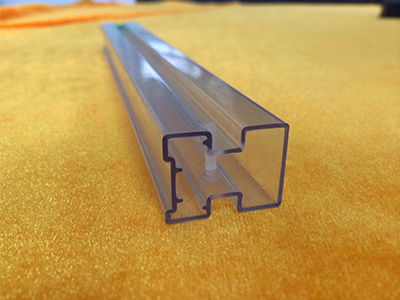The higher the molding temperature, the greater the proportion of irreversible deformation in the product, and the better the shape stability of the product. The process of extrusion blow molding includes forming a tube blank, extruding through an extruder and hanging in a pre separation cavity directly below the die head. The influencing factors of biaxial tensile process are different. The appropriate tensile temperature of various resins is different. Generally, the temperature with large elongation is taken as the tensile temperature.
For example, PVC and pet are 10-40 ℃ higher than TG. The temperature of pet is 90-110 ℃, and the temperature of PVC is 100-140 ℃. For PP, it is 5-40 ℃ lower than the melting point (usually 150 ℃). Near TF higher than the glass transition temperature of the polymer, the semi-finished products of the polymer (tubes, hollow profiles, etc.) deform rapidly and then maintain deformation. In a short time, it is cooled below the glass transition temperature or crystallization temperature to freeze the deformation of the formed product.
This is the viscoelastic principle of hollow forming. Some competitive pressure comes from Asian injection molding, structural foaming and polyurethane reactive injection molding manufacturers. At present, most 5l-1000l hollow products are extrusion blow molding process. The main raw materials used are HDPE, PP, ABS, PC, etc.
The main products of Dalian hollow molding factory are used for packaging barrels of various chemical products, automobile fuel tanks, automobile ventilation pipe accessories, desktop boards and other industrial products. Blow molding can basically be divided into two categories: extrusion blow molding and injection blow molding. The main difference between the two is the preparation of parison, and the subsequent blow molding process is basically the same.







